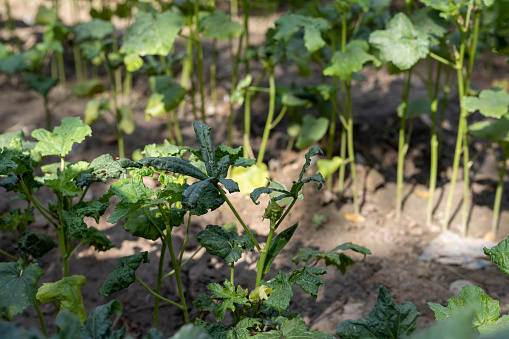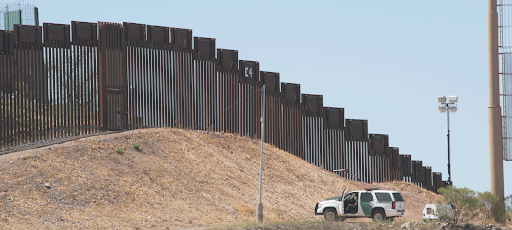Wildlife Diseases and Parasites Surveillance
Wildlife surveillance is important for several reasons. First, it helps wildlife managers determine the status of endangered species. Second, it helps prevent the spread of diseases and parasites in an area. Third, it is important for wildlife managers to know the number and species of invasive species in an area. This information helps them manage the population more effectively.
What is wildlife surveillance?
Wildlife surveillance is a type of research in which wildlife are monitored to detect disease outbreaks. It involves monitoring wildlife populations to identify disease outbreaks, characterize disease prevalence, and measure disease spread. Disease surveillance relies on a variety of methods, including sampling from convenience animals or a probability sample. Generally, a probability sample provides an estimate with quantifiable statistical properties, but in many cases, the distribution of diseases is not random. In these cases, landscape-based simulation techniques are used to explore the statistical properties of estimates obtained from convenience samples.
The results of wildlife health surveillance are necessary to inform mitigation measures and disease management. The presence of zoonotic agents or pathogens in wildlife can cause substantial economic losses for livestock producers. As diseases become increasingly recognised as a serious threat to biodiversity and ecosystem health, their surveillance is essential to inform policy and practice. Various anthropogenic processes can influence the emergence of diseases, including pathogen pollution and host-pathogen translocation.
Wildlife health surveillance programs vary from country to country and are often fragmented and incomplete. One survey of 25 countries in Europe found that only fourteen countries had a general or partial WHS, and many others had none. This means that knowledge of the wildlife health status of a region is limited, and countries must learn from one another’s experiences and develop their own surveillance systems.
Why should wildlife managers monitor species?
Wildlife monitoring is a crucial part of wildlife management and conservation science. It is vital for the identification of species in danger and allows managers to make better management decisions. It can also help identify the effects of management actions. It can help managers understand population responses to habitat changes and climate change. It also provides basic information on species distribution. For example, a monitoring program can determine whether or not a species is adapted to a particular habitat.
The main purpose of wildlife monitoring is to understand ecological relationships and to improve decision-making. It is also vital for proactive conservation of wildlife resources. Monitoring allows managers to spot potential problems before they happen, prevent them from becoming serious, and save money. Furthermore, it can help managers evaluate different management methods and help them reconcile stakeholder interests.
Conservation strategy monitoring is a necessary step in the process of species conservation. However, some monitoring programs fail to address the causes of variability in monitoring data, which limits their usefulness in identifying declines and improving management. For instance, in a recent study of the Snail Kite population, scientists used a superpopulation estimator to estimate the size of the population. These estimates were based on the number of young produced by a population.
Why is species monitoring important?
Detection of disease in wildlife requires a systematic approach and a combination of surveillance methods. Monitoring methods should be based on individual risk factors as well as environmental conditions. It is important to distinguish between healthy and infected animals to ensure the most accurate detection of a disease. For a global approach to wildlife disease surveillance, it is essential to adopt standardized definitions and methods.
A key goal of wildlife health research is to identify risk factors that facilitate the spread of wildlife diseases. Knowledge about these risk factors can help to manage infections, particularly emerging infectious diseases. This knowledge can also help to formulate policies related to land-use and conservation. For example, the same disease can behave differently in different areas and situations if they are associated with different climatic conditions or are managed by different species.
Because free-ranging wildlife doesn’t respect national borders, interregional communication is essential to timely detection of disease outbreaks and the implementation of preventive measures. For instance, classical swine fever recently appeared in southern Switzerland following the movement of wild boars from Italy. Similarly, the H5N1 avian influenza virus is spreading throughout Europe due to the migratory movements of wild birds.
How are endangered species monitored?
Monitoring wildlife disease outbreaks for endangered species requires multiple methods of detection. The first method, called active surveillance, focuses on animal populations that have been exposed to disease. The second method, known as targeted surveillance, focuses on animal populations that appear to be healthy. Both methods rely on non-invasive sampling.
One of the goals of wildlife health research is to identify risk factors. Such factors may enable the persistence of diseases in populations. Knowledge of such risk factors can help improve land-use policies and management practices. Additionally, the same disease in different habitats or situations may behave differently. This may be due to differences in the climatic conditions of each region and the management of one or both species.
Human activities are a major cause of disease outbreaks. Humans bring domestic animals and humans into wild habitats. The spread of disease can be dangerous for endangered species. Viruses and bacteria can cause death and even extinction, which is why disease monitoring is essential.
How do you record wildlife sightings?
There are a variety of ways to record wildlife sightings. You may choose to compile a list yourself and submit it monthly or annually, or you may prefer to use a software application such as MS Excel or Office 365 to create a detailed record. There is also a free online tool, Grab A Grid Reference, which helps you create a record.
Wildlife recording groups can set up their own websites to collect information about wildlife. A popular way to do this is to embed an iRecord form on your website. This website is free and allows you to upload photographs and biological observations. Once you have created your account, you can follow the progress of the project and track your observations.
In the UK, there are a number of different tools that help you record wildlife. Many people use iNaturalistUK and iRecord to collect data. Both systems share your records with the National Recording Scheme and Local Environmental Record Centre.
Why is record keeping important in zoos?
Animals need accurate records to ensure their welfare, and record keeping in zoos is critical. Zoos have many different types of records, including medical, behavioral, and life history records. These records are essential to keeping the animals in good health, and are vital for preparing a plan for endangered species conservation.
Records help zoos make better decisions about animal care and conservation. They provide data that can be shared among zoos, thereby allowing zookeepers to make evidence-based decisions. This data can inform husbandry, health, conservation, and collection planning decisions.
Records are crucial for zoos, as they enable them to monitor animal health, and facilitate breeding programmes. They are the basis of zoo and aquarium decisions about animal care, management, and conservation. Under SSSZMP, zoos are required to maintain accurate records on all animals. These records must be easily accessible, up-to-date, and secure.
Keeping records is a crucial part of a zoo’s management, and a zoo registrar is a vital part of that process. Despite their diverse roles and responsibilities, registrars also manage and maintain zoo’s databases and records.
What records need to be kept for animals?
Veterinary medical records are an important part of proper animal care. These documents document a variety of information, including the type of illness or injury, time of onset, and severity. According to USDA guidelines, the records should be comprehensive and detailed. Records are kept for both individual and group animals.
Records are needed to show that a facility is providing the appropriate level of care and sanitation. Without these records, one cannot show the facility is following the rules and regulations. The records should also document whether veterinary services were provided. Moreover, the facility’s supervisor will require information about live animal procedures. This includes medications and other treatments, and any complications.
It is essential to keep records for animals if you are planning to run a livestock enterprise. These records will allow you to track the performance of individual animals and the whole herd. They will also help you decide which investments you need to make to increase production. For example, knowing how much time an animal is in the barn can help you determine prices for its products.



